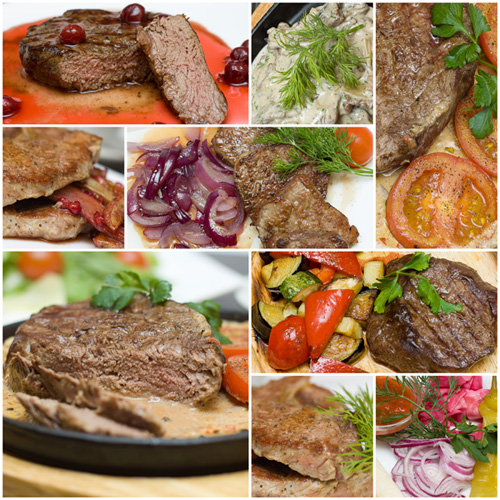Recently,Intermittent Fasting Meal Plans there have been a couple questions floating around about daily intermittent fasting. Some of these include: “Do I really only eat a meal per day?”; “Is going without fo
 od for so long unhealthy?”; and my favorite, “Isn’t the most important meal breakfast?”
od for so long unhealthy?”; and my favorite, “Isn’t the most important meal breakfast?”
Let’s start with the last question,Intermittent Fasting Meal Plans which has a simple answer: no. Based on some of the breakfasts that we see people eat, I will give you a strong and definitive answer on the breakfast question. Looking at breakfasts that include cookies, cereal, and oatmeal, this can be the worst meal of the day for you.
However, things are not so cut and dry when it comes to the subject of daily intermittent fasting. There are a few things that you should know before beginning the process, and I am here to give you that information. While you may read other posts about this topic, here we will go in depth about some of the nuances and misconceptions about it. I will also tell you how I go about the process, which may help you as well. So let’s go.
This article is not written with the intent of a broad recommendation for everyone, and fasting is not for everyone. If your metabolism is healthy, fasting may be good for you, and you should give it a shot. While in the beginning it may be uncomfortable, there are many health advantages that can come from this process. And this is a great way to make a more conscious effort to eat better: staying away from snacks, not eating more once full, and exercising. These efforts will all help you become more healthy, thin, and happy with your appearance. And you may even see a boost in your self-esteem.
What is daily intermittent fasting?
In a sense, it is a tool. Yes, I said a tool. This tool is used to help you change the way you look at and approach food. It also will help rational, practical people enjoy a good indulgence of a craving without feeling guilty, upset, fat, or depressed about it. It is also good practice to limit your caloric intake, which can affect you both mentally and physically. This will be extremely beneficial for you once your body fat percentage is in the single digits.
Daily intermittent fasting is not…
Let’s briefly talk about what daily intermittent fasting is not. To begin with, it is not a necessity. There are many other ways to lose weight and this does not have to be one of the methods you use. If you enjoy three meals a day, and can eat healthier and exercise, that’s a great way to lose weight. Many people can stay healthy, and have amazing bodies, while still eating three meals a day. Fasting is not for all body types, metabolisms, and sizes.
Starvation mode?
There is a popular concept called starvation mode, and I am here to tell you it is total nonsense. Starvation mode does exist: it is that period of time where your body digests your stored fat and muscle to help you survive when you haven’t eaten. The myth part of this is that your body will kick into this mode every time you go a few hours without food. That is ridiculous and untrue. Many studies have proven that in fact this only kicks in when you go 60 hours or more without food.
Again, 60 hours for this to kick in. At most, a fast will last 16-24 hours. Not even close for starvation mode to kick in. There are even ways to prevent loss of muscle during your fasting times, and while we will not discuss those here, they are easy to find. Remember not to stress about this happening if you are interested in daily intermittent fasting.
How it’s done
The main rule for intermittent fasting is simple: Don’t eat. While this may be a turnoff for many people, and sound a little crazy, let’s discuss the four more popular ways to incorporate this process into your life.
- Daily Intermittent Fasting: This is also commonly known as the 16/8, the eight being the amount of hours you are allowed to eat. This is my favorite method, and in the end allows you to eat a meal around noon, and another around 6 or 7, dinner time. Typically I don’t eat outside, and I get through the morning with good, tasty caffeine that also acts as an appetite suppressant.
- The Long Fast: This method is variable, but the idea is to go a day or two without food, and then eat normally the rest of the time. Some of the ways in which people break this method up is by fasting for a day or two a week, or three or four days a month.
- Alternate Day Fast: This method consists of eating three regular meals a day, with your last meals at about 6 or 7. You then fast until that same time the next evening. Brad Pilonin, author of the book Eat Stop Eat offers this method because it is similar to daily fasting: both work by limiting your caloric intake over the long term.
- Eat When Hungry: This is less of a fasting method and more of a philosophy on food. This requires one to detach food and emotions. Many of us eat when bored, stressed, upset, sad, and during a number of other emotional times during our lives. This leads many people to eat when they are not really hungry, which leads to weight gain. One must make a conscious effort to eat only when hungry. This also includes stopping eating when full, and staying away from food during hard emotional times. One alternative to eating during emotional times is to workout instead, go for a walk, or even read a book.
There is no listing these methods in any particular order as they all work when done properly. Each method is a little different and you can find the one that fits into your busy day.
My preferred method is the 16/8. This is because I rarely have time to get up in the morning and cook something. It also allows me to have lunch with friends and co-workers, and a good dinner with the family in the evening. And while it may seem strange for some to skip breakfast, why can’t you have breakfast for dinner?
Week one
Once you have decided to try fasting, you want to know what to expect.
Well, that’s an easy on. Faster John Nguyen said it best with, “You will be hungry.” How hungry and how you will be affected will depend on you: your body type, metabolism, etc. One of the first things that you will notice is the stomach rumbles; this is more true for those who are used to eating three meals a day. The hunger hormone, ghrelin, will take a week or two to retrain. Once this happens, skipping your morning meal will not be a big deal at all.
Those who start a low-carb diet before fasting will adjust much easier. This will help your body adjust to burning stored fat. It will also help ketosis begina, which is when the body, and the liver in particular, generates energy to make up for the lack of carbs. Ketones also create a decreased appetite, which also makes it easier to begin fasting and adjust.
Conclusion
Once more, you will be hungry in the beginning. The first week I fasted I felt hunger pains a lot. But I stuck with it, drank lots of water, and now feel better and healthier. It is easy now to skip meals, and I can even go between 7am and noon with no pains at all. So if fasting sounds like something you are interested in, give it a try and see the benefits quickly.


Leave Your Response